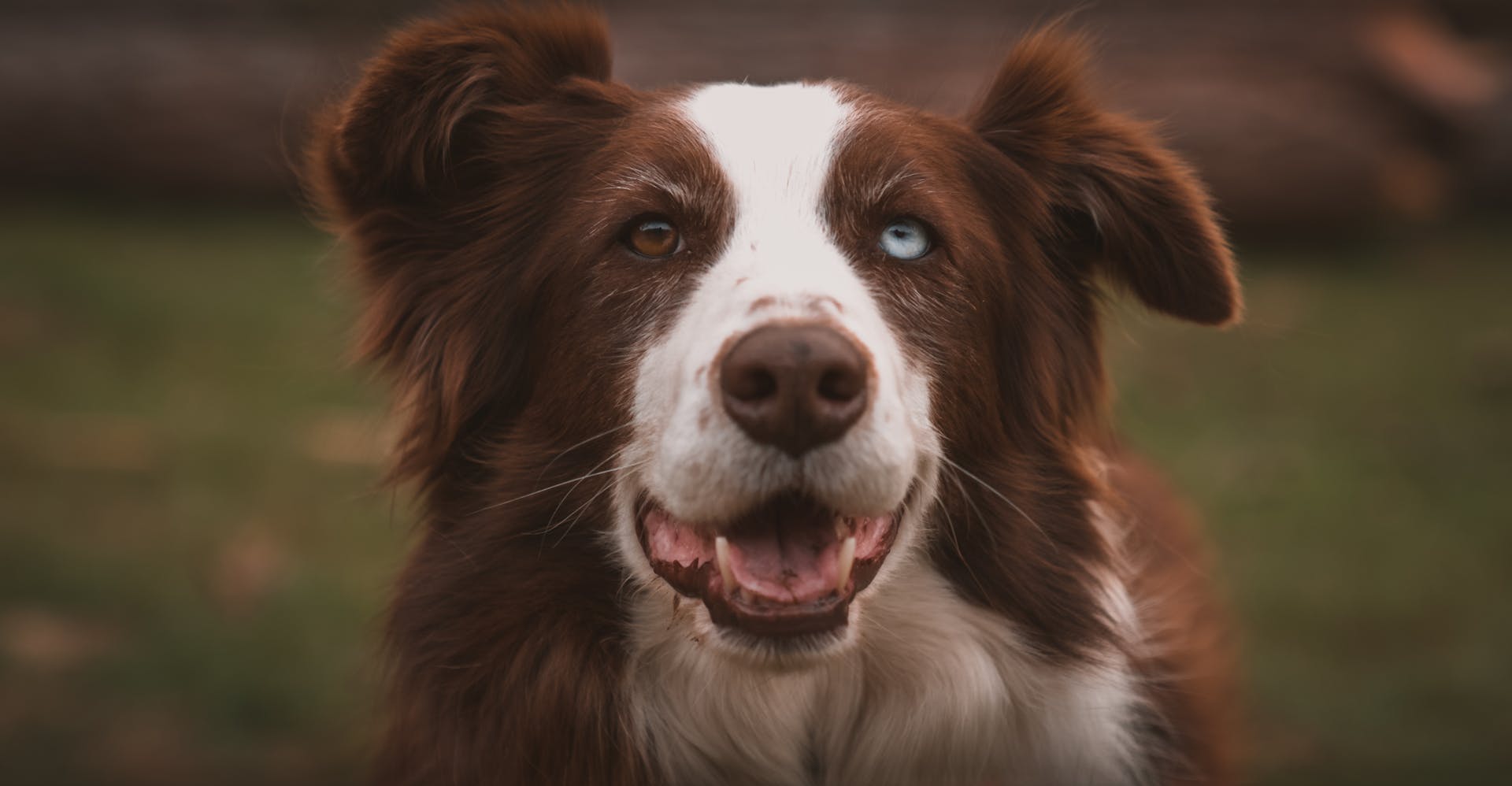
Heterochromia in dogs is a rare and unique condition where a dog has eyes of two different colors. This can occur in one or both eyes, and it's caused by a genetic variation that affects the production of pigment in the iris.
One of the most striking examples of heterochromia in dogs is the condition where one eye is blue and the other is brown, often referred to as "odd-eyed" or "heterochromatic." This condition is relatively rare in dogs, but it's a fascinating characteristic that can make a dog stand out.
Dogs with heterochromia often have a higher risk of eye problems, such as cataracts or glaucoma, due to the uneven distribution of pigment in the iris. However, many dogs with heterochromia lead healthy and happy lives with proper care and attention.
The combination of blue and brown eyes can create a striking appearance, making heterochromia a popular topic among dog enthusiasts and breeders.
You might like: Puppys with Blue Eyes
What Causes Heterochromia in Dogs
Heterochromia in dogs is a fascinating trait that can add to their unique charm. Inherited heterochromia is caused by specific genes that are often the same genes that determine coat color.
Scientists have identified 15 genes that play roles in canine coat color phenotypes. Two genes known to produce heterochromia are the merle and piebald genes.
Dogs with the merle gene are more likely to have heterochromia than dogs without this gene. The merle gene is associated with a host of ear and eye disorders, making it essential for breeders to be aware of its risks.
The merle gene produces stunning coat colors, but it's also linked to blindness and deafness in some dogs. Unscrupulous breeders may produce blind and/or deaf dogs and pass them off to unsuspecting owners.
The piebald gene, also known as the white spotting gene, can result in heterochromia and deafness. This gene causes a more random deletion of melanin, leading to a dog's coat having white patches or spots.
Check this out: Red Merle Dog Names
Certain dog breeds are more prone to having eyes of differing colors due to a preponderance of the genes that cause heterochromia. These breeds include Australian Shepherds, Siberian Huskies, Great Danes, Dachshunds, Dalmatians, Chihuahuas, Shih tzus, Border Collies, and others.
In fact, some sources suggest that perhaps 10% of Siberian Huskies are either bi-eyed or parti-eyed. This means that if you're considering getting a Husky, there's a good chance it might have heterochromia.
If this caught your attention, see: Blue Eyed Female Dog Names
Understanding Heterochromia Inheritance
Heterochromia inheritance is a fascinating topic that can help you understand why your dog might have one blue eye and one brown eye.
The merle gene is a key player in inherited heterochromia, and it's responsible for the stunning coat colors of dogs like Australian Shepherds and Siberian Huskies.
Dogs with the merle gene are more likely to have heterochromia than dogs without it, which is why you often see bi-eyed or parti-eyed dogs in these breeds.
Here's an interesting read: 1 Syllable Female Dog Names
The merle gene is an incomplete dominant gene, meaning that only one parent needs to carry it to pass it along to their offspring.
If you're considering breeding your dog, it's essential to understand the risks associated with the merle gene, as it can lead to a range of health issues, including blindness and deafness.
The double-merle gene, which occurs when two dogs with merle characteristics are bred together, can result in a 25% chance of producing puppies with severe health problems.
On the other hand, the piebald gene, also known as the white spotting gene, can cause a more random deletion of melanin, leading to heterochromia and deafness in some dogs.
Certain breeds, such as Australian Shepherds and Siberian Huskies, are more prone to inheriting heterochromia due to the prevalence of genes that cause it.
In fact, some sources suggest that up to 10% of Siberian Huskies are either bi-eyed or parti-eyed, highlighting the importance of understanding heterochromia inheritance in these breeds.
Explore further: Green Eyed Dog Names
Frequently Asked Questions
Is it rare to have one blue eye and one brown eye?
Yes, having one blue eye and one brown eye is a rare condition, occurring in about 6 in every 10,000 people in the US. We'll explore the reasons behind this unique phenomenon and what it means for those affected.
What is the name for heterochromia?
Heterochromia is a condition characterized by eyes with different colored irises, classified into three visual patterns: Complete and Sectoral heterochromia.
Featured Images: pexels.com


